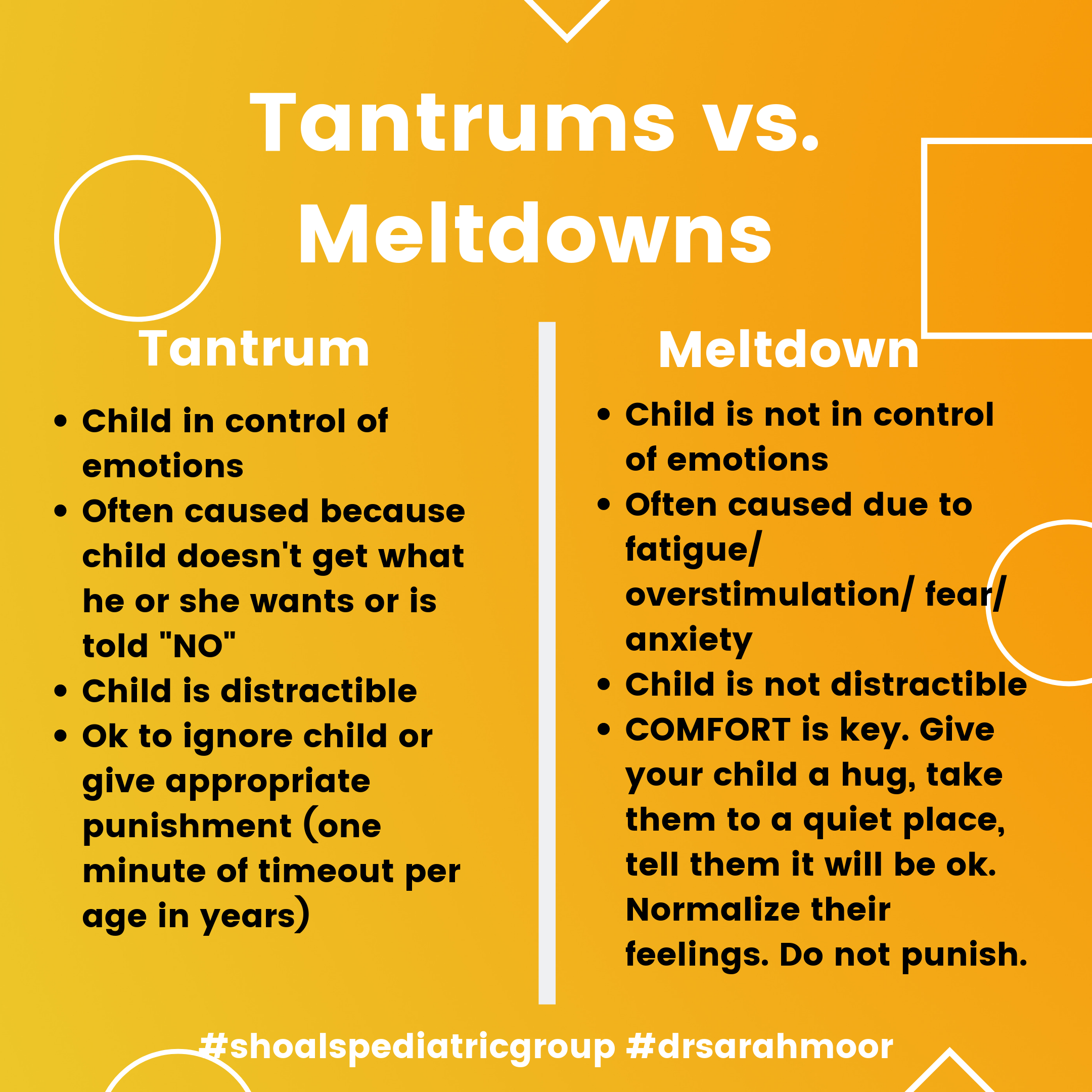Struggling to handle tantrums and meltdowns in children? Don’t worry, you’re not alone! Dealing with these challenging behaviors can be overwhelming for any parent or caregiver. But fear not, because I’m here to provide you with some expert tips and strategies to navigate through these stormy moments with ease.
When it comes to tantrums and meltdowns, it’s important to remember that they are a normal part of a child’s development. However, that doesn’t mean they’re easy to handle. So how can you effectively manage these outbursts without losing your sanity? Well, the key is to stay calm, patient, and understanding. Remember, you’re the adult in this situation, so it’s crucial to model the behavior you want to see in your child. By remaining composed and collected, you’re more likely to diffuse the situation and help your child regain control of their emotions.
One effective strategy is to establish clear and consistent boundaries. Children thrive on routine and structure, so setting clear expectations and enforcing them consistently can help prevent tantrums and meltdowns from occurring in the first place. Additionally, providing your child with choices can empower them and give them a sense of control, reducing the likelihood of a power struggle. Remember, understanding the underlying cause of the tantrum is also important. Is your child tired, hungry, or overwhelmed? Addressing their needs and offering comfort and support can go a long way in defusing the situation. So take a deep breath, equip yourself with these strategies, and get ready to handle tantrums and meltdowns like a pro!
How to Handle Tantrums and Meltdowns in Children
Tantrums and meltdowns are common in children, but they can be challenging to handle. Here are some steps to help you navigate these situations:
- Stay calm: Take a deep breath and remain composed.
- Validate their feelings: Let them know you understand their frustration.
- Set limits: Establish clear boundaries and expectations.
- Offer choices: Give them options to empower them and reduce resistance.
- Provide distraction: Redirect their attention to something positive.
- Use positive reinforcement: Praise good behavior to encourage positive changes.
Remember, each child is unique, so finding what works best may take some trial and error. Stay patient and consistent in your approach.

How to Handle Tantrums and Meltdowns in Children?
Tantrums and meltdowns are common occurrences in children, especially during their early years. These outbursts can be challenging for parents and caregivers to handle, but it’s important to remember that they are a normal part of child development. Understanding the underlying causes of tantrums and meltdowns and implementing effective strategies can help parents navigate these challenging moments with their children.
Causes of Tantrums and Meltdowns
Tantrums and meltdowns can be triggered by various factors, and it’s essential to recognize the root causes to address them effectively. One common cause is frustration. Young children often lack the ability to communicate their needs and desires effectively, leading to feelings of frustration and resulting in tantrums. Additionally, fatigue, hunger, and overstimulation can contribute to emotional outbursts. Children may also engage in tantrums as a way to test boundaries or gain attention.
It’s crucial to remember that tantrums and meltdowns are not necessarily a reflection of poor parenting or character flaws in the child. They are a normal part of development and an opportunity for growth and learning.
Identifying Triggers and Patterns
To effectively handle tantrums and meltdowns, it’s important to identify the triggers and patterns specific to your child. Keep a journal or mental notes of the situations, environments, or events that seem to precede these outbursts. Look for common themes or patterns that may shed light on the underlying causes. For example, you may notice that tantrums often occur when your child is tired or hungry or when they are in a crowded or overstimulating environment.
Once you have identified the triggers, you can proactively address them and implement strategies to prevent or minimize future outbursts. This may involve adjusting your child’s schedule, ensuring they are well-rested and fed, or creating a calm and quiet environment when they are feeling overwhelmed.
Effective Strategies for Handling Tantrums
When faced with a tantrum or meltdown, it’s important to respond calmly and empathetically. Here are some strategies that can help:
1. Stay calm: It’s natural to feel frustrated or overwhelmed when your child is having a tantrum, but it’s essential to remain calm. Take deep breaths and remind yourself that this is a temporary situation.
2. Validate their feelings: Let your child know that you understand their frustration or anger. Use phrases such as “I can see that you’re feeling upset” or “It’s okay to feel angry, but we need to find a better way to express our emotions.”
3. Provide a safe space: If possible, create a safe and quiet space where your child can calm down. This could be a designated area in your home or a comforting spot in public, away from potential triggers.
4. Offer distractions: Engaging your child in a different activity or redirecting their attention can help diffuse the tantrum. Offer a favorite toy, sing a song, or suggest a calming activity such as drawing or deep breathing exercises.
5. Set clear boundaries: Establishing consistent rules and boundaries can help prevent tantrums. Clearly communicate your expectations and consequences in a calm and assertive manner.
6. Use positive reinforcement: When your child manages to express their emotions in a more appropriate manner, acknowledge and praise their efforts. Positive reinforcement can encourage them to continue using healthier coping strategies.
Preventing Tantrums and Meltdowns
While it may not be possible to completely eliminate tantrums and meltdowns, there are strategies you can employ to minimize their occurrence:
Establish routines and predictability
Children thrive on routines and predictability. Establish consistent daily routines for meals, naps, and bedtime. Communicate upcoming changes or transitions in advance to prepare your child and minimize potential stress.
Teach emotional regulation skills
Help your child develop emotional regulation skills by teaching them appropriate ways to express their feelings. Encourage them to use words to communicate their needs and emotions and provide them with tools such as deep breathing or counting to ten to help them calm down.
Provide choices and autonomy
Offering your child choices within reasonable limits can help them feel more in control and reduce frustration. For example, allow them to choose between two snack options or decide which activity they would like to engage in.
Model healthy coping strategies
Children learn by observing the behavior of those around them, so it’s important to model healthy coping strategies. Demonstrate effective problem-solving, conflict resolution, and stress management techniques in your own behavior.
Encourage open communication
Create a safe and open environment where your child feels comfortable expressing their thoughts and emotions. Encourage them to talk about their feelings and validate their experiences.
Conclusion
Handling tantrums and meltdowns in children requires patience, understanding, and effective strategies. By identifying triggers, implementing appropriate responses, and employing preventive measures, parents can navigate these challenging moments with their children and promote healthy emotional development. Remember, tantrums are a normal part of child development and an opportunity for growth and learning.
Key Takeaways: How to handle tantrums and meltdowns in children?
- 1. Stay calm and composed during tantrums.
- 2. Validate your child’s feelings and emotions.
- 3. Use distraction techniques to divert their attention.
- 4. Establish clear and consistent boundaries.
- 5. Teach your child appropriate ways to express their emotions.
Frequently Asked Questions
Q: Why do children have tantrums and meltdowns?
Children have tantrums and meltdowns as a way to express their frustration, anger, or overwhelm. It is a normal part of their development and a way for them to communicate their needs when they do not have the language skills to do so effectively. Tantrums and meltdowns can also be triggered by hunger, fatigue, overstimulation, or a desire for independence.
It is important for parents and caregivers to understand that tantrums and meltdowns are not intentional acts of misbehavior, but rather a result of the child’s emotional state. By recognizing the underlying causes and responding with empathy and understanding, adults can help children navigate these challenging moments.
Q: How can I prevent tantrums and meltdowns in children?
While it is not possible to completely prevent tantrums and meltdowns in children, there are strategies that can help minimize their occurrence. Providing a consistent routine and structure can help children feel secure and reduce feelings of overwhelm. Ensuring that children have regular meals, snacks, and adequate rest can also help prevent tantrums triggered by hunger or fatigue.
Additionally, giving children choices and opportunities for autonomy can reduce frustration and power struggles. Teaching children appropriate ways to communicate their needs and emotions can also help prevent tantrums. It is important to remember that preventing tantrums and meltdowns requires patience and understanding, as children are still developing their emotional regulation skills.
Q: How should I respond to a tantrum or meltdown?
When a child is having a tantrum or meltdown, it is important to stay calm and avoid reacting with anger or frustration. Remember that the child is experiencing intense emotions and needs your support. Stay nearby to ensure their safety, but give them space to express their feelings.
Offering comfort and reassurance can be helpful, but avoid trying to reason with the child or offering rewards or punishments during the meltdown. Instead, wait until the child has calmed down before discussing the situation and helping them understand their emotions. Providing a quiet and safe space for the child to calm down can also be beneficial.
Q: How can I teach my child to manage their emotions and avoid tantrums?
Teaching children to manage their emotions is an ongoing process that requires patience and consistency. Help your child identify and label their emotions by using simple language. Encourage them to express their feelings in appropriate ways, such as talking about how they feel or using calming techniques like deep breathing or counting.
Modeling healthy emotional regulation yourself is also important. Show your child how to cope with frustration and stress in a positive manner. Provide opportunities for your child to practice problem-solving and decision-making skills, as this can help them feel more in control and reduce the likelihood of tantrums. Remember to praise and reinforce your child’s efforts to manage their emotions effectively.
Q: When should I seek professional help for my child’s tantrums and meltdowns?
While occasional tantrums and meltdowns are a normal part of childhood, there may be times when professional help is needed. If your child’s tantrums are frequent, intense, or significantly impacting their daily functioning, it may be beneficial to consult with a pediatrician, therapist, or other mental health professional.
Professional help may also be warranted if your child’s tantrums are accompanied by other concerning behaviors, such as aggression towards others or self-harm. A qualified professional can assess your child’s behavior, provide guidance, and recommend appropriate interventions to support their emotional well-being.

Final Thoughts on Handling Tantrums and Meltdowns in Children
In conclusion, dealing with tantrums and meltdowns in children can be challenging, but with the right strategies, it becomes manageable. Remember, children are still learning how to express their emotions, and tantrums are often a result of frustration or overwhelm. By staying calm and patient, setting clear boundaries, and using positive reinforcement, you can effectively handle these challenging moments.
It’s important to understand that each child is unique, and what works for one may not work for another. Therefore, it’s crucial to adapt your approach based on your child’s individual needs and temperament. By creating a safe and nurturing environment where your child feels understood and supported, you can help them develop healthy coping mechanisms and emotional regulation skills.
Furthermore, communication is key when it comes to preventing tantrums and meltdowns. Encouraging open dialogue and teaching your child appropriate ways to express their feelings can significantly reduce the frequency and intensity of these outbursts. Remember, your role as a parent or caregiver is to guide and teach, rather than punish or suppress emotions.
In conclusion, handling tantrums and meltdowns requires a combination of empathy, patience, and effective communication. By implementing these strategies consistently and understanding your child’s unique needs, you can create a harmonious and supportive environment where both you and your child can thrive. Remember, no parent is perfect, and it’s okay to seek support and advice when needed. Together, we can navigate the challenges of parenthood and help our children grow into emotionally resilient individuals.







